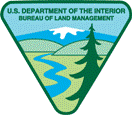U.S. Department of the Interior
Date of this Version
1996
Abstract
This technical note describes a method that incorporates a landscape approach with the use of Geographic Information Systems (GIs) to measure habitat and impacts for Rocky Mountain and desert bighorn sheep and to rank potential transplant sites. A landscape approach, in which habitat is viewed from a large-scale perspective as an assemblage of patches, is used because: (1) bighorn habitat is naturally patchy due to the affinity of bighorn for terrain that is both open and mountainous; (2) fragmentation (i.e., increased patchiness) often is the most severe consequence of human disturbance; and (3) the proximity and distribution of neighboring bighorn ranges may be critical factors in determining genetic and demographic support for small bighorn populations. Potential suitability (the inherent capability to support bighorn sheep) and current suitability (the effect of impacts) is determined for each study area. Habitat components measured in alpine habitat include total habitat, escape terrain, and escape terrain contiguity in both summer and winter ranges. Habitat components measured in low-elevation habitat include total habitat, escape terrain, escape terrain contiguity, and water availability.


Comments
Published by Bureau of Land Management, Technical Note 395, September 1996.